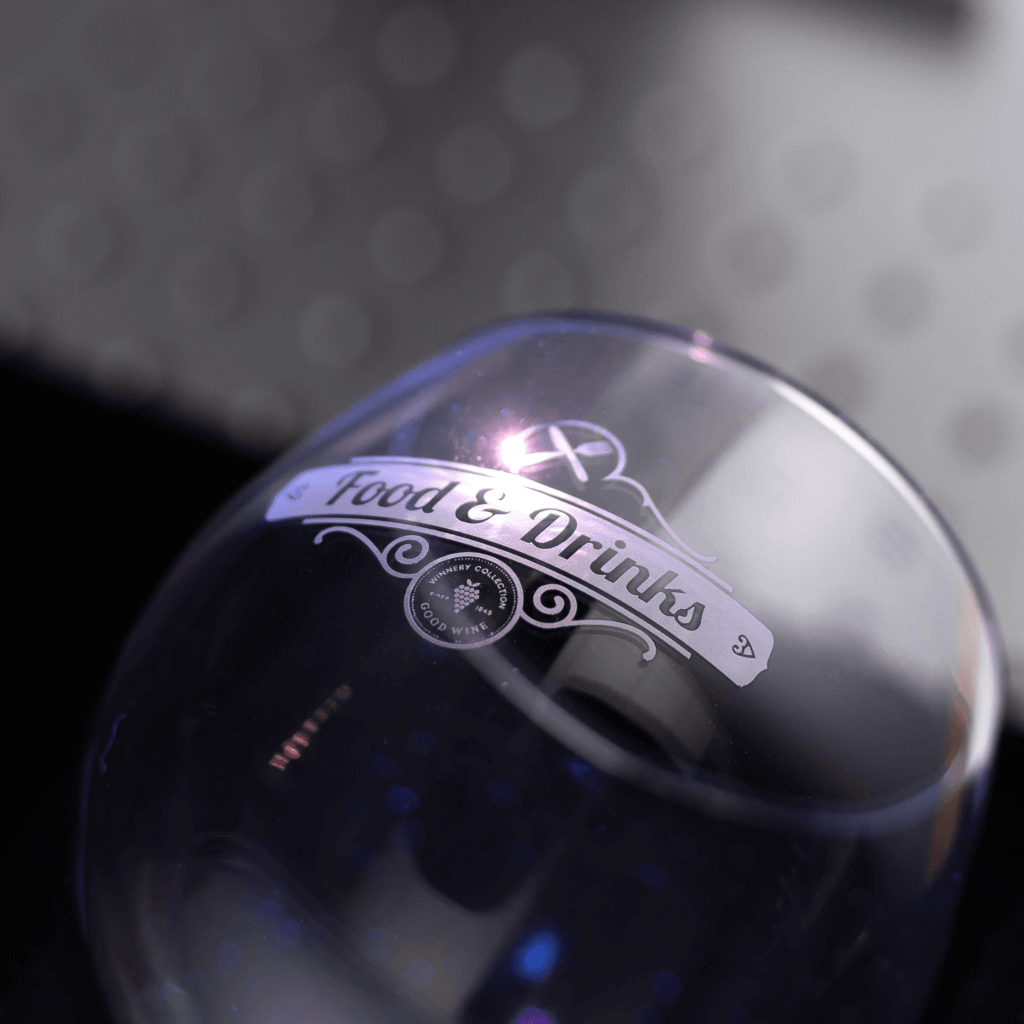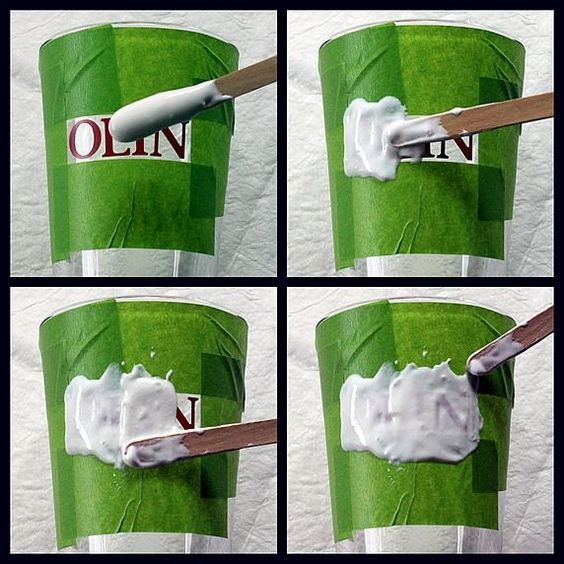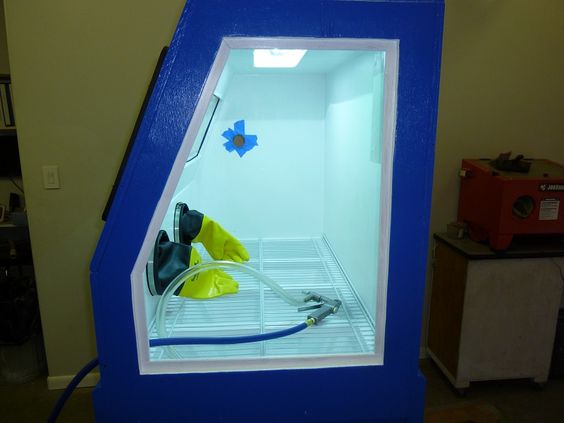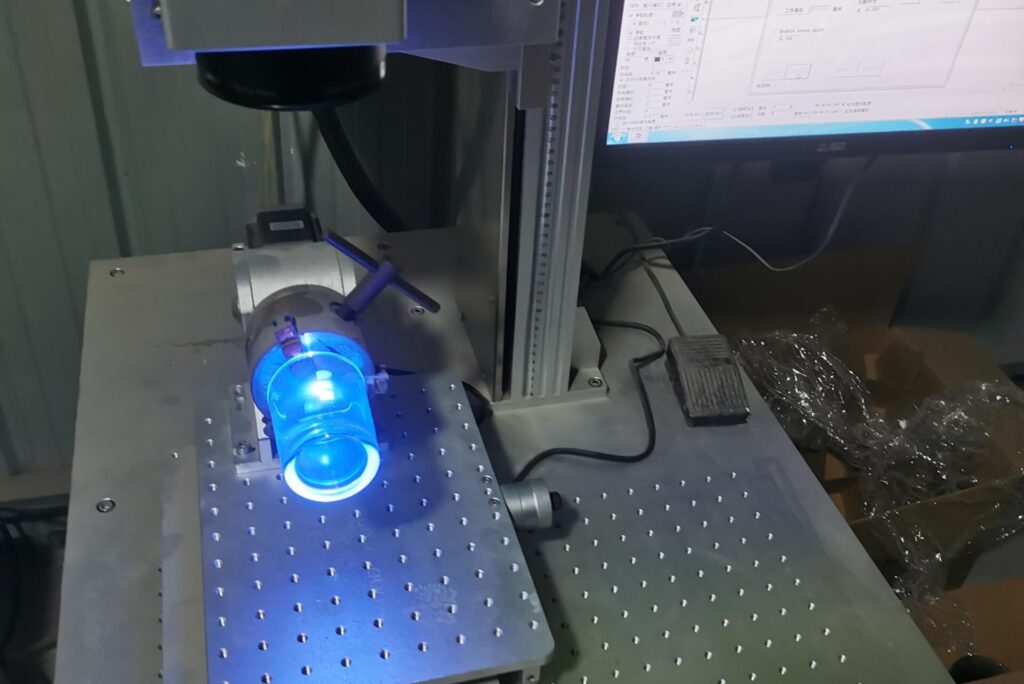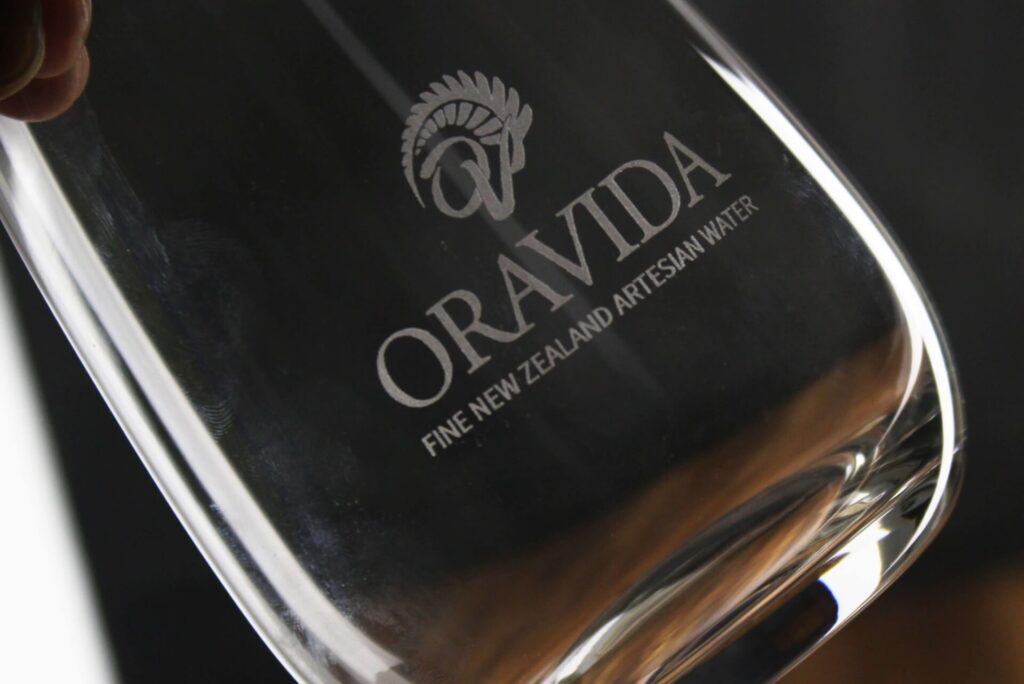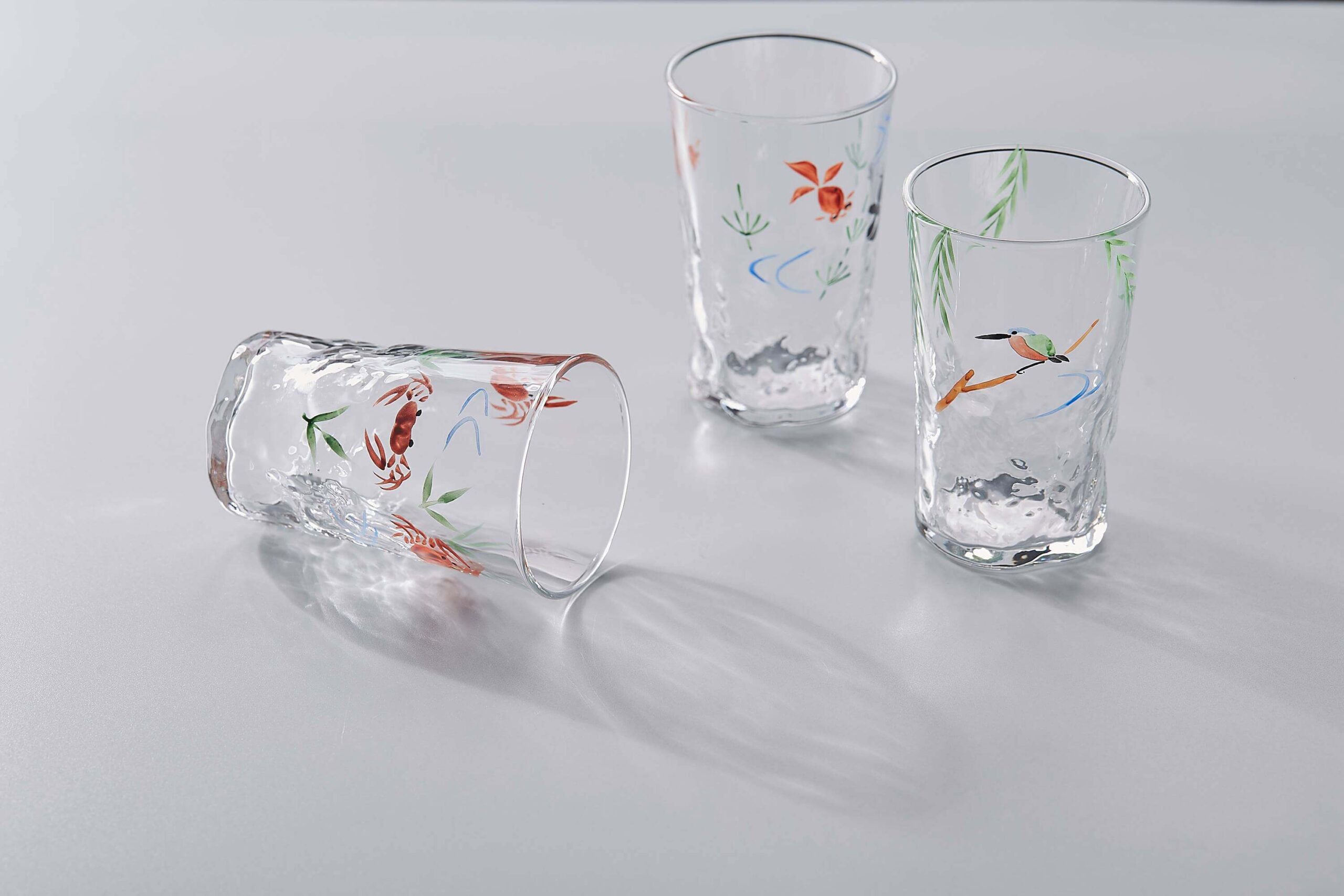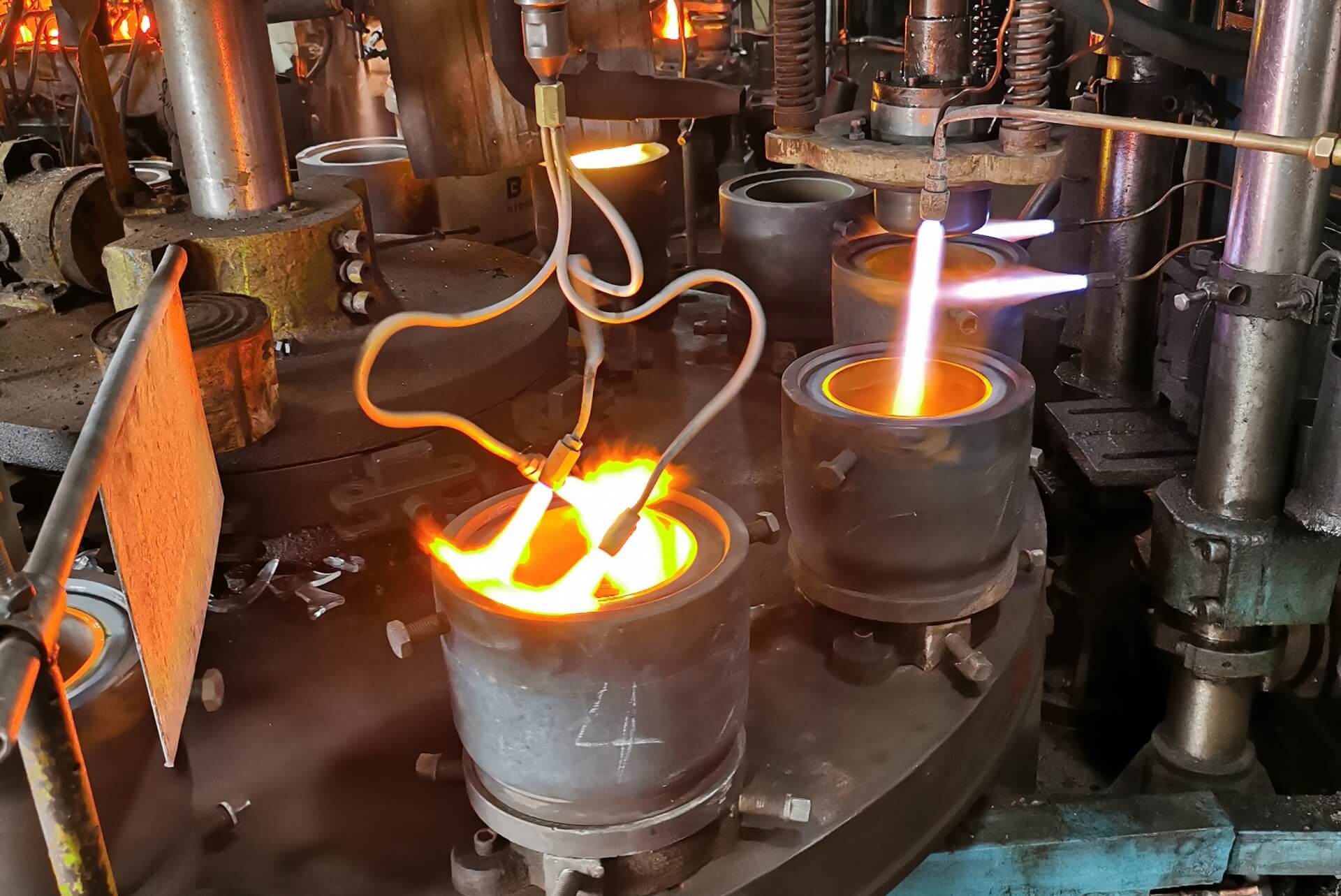Glassware Etching in Business-to-Business Transactions
In the realm of B2B, where every transaction is not just an exchange of goods but a testament to brand identity and quality, the role of glassware decoration becomes paramount. Glassware Etching, in particular, offers B2B glassware branding a distinctive edge. It’s not merely about embellishing a piece of glass but about engraving a brand’s ethos onto a tangible product.
source: lida
Techniques and Methods in Glassware Etching
Glassware Etching stands as a testament to the delicate balance between art and science. This intricate process, which involves engraving designs onto glass surfaces, has been practiced for centuries, evolving with the march of technology. Today, a plethora of techniques are at the disposal of artisans and industries alike, each offering its unique touch to the final product. Let’s delve into some of the most prominent methods for Corporate glassware decoration.
Method 1: Acid Etching
Acid Etching is a venerable technique, reminiscent of bygone eras. This method employs caustic chemicals to etch designs onto glass.
Processing Steps:
- The glass surface is meticulously cleaned to ensure no residues.
- A protective resist is applied to areas intended to remain untouched.
- The exposed regions are then subjected to the acid, typically hydrofluoric acid.
- The acid reacts with the glass, yielding a frosted appearance.
- The glass is then rinsed thoroughly to neutralize and remove any residual acid.
The resultant piece boasts a tactile, frosted finish, exuding an aura of timeless elegance.
source: pinterest
Method 2: Sandblasting
Sandblasting harnesses the abrasive prowess of fine sand particles, propelled at high velocities, to etch designs.
Processing Steps:
- The glass is cleaned to ensure a pristine surface.
- Areas not to be etched are masked with a durable resist.
- Using specialized equipment, sand is blasted onto the exposed areas.
- The abrasive force renders these areas opaque and textured.
- Post-etching, the resist is removed, revealing the design.
The outcome is a matte, textured finish, both visually compelling and tactilely intriguing.
source: pinterest
Method 3: Laser Etching
A marvel of modern technology, Laser Etching employs high-energy laser beams, ensuring unparalleled precision and detail.
Processing Steps:
- The glass is prepped and cleaned.
- A computer-guided laser is calibrated to the desired intensity and design.
- The laser beam is directed onto the glass, etching the design with surgical precision.
- The depth of etching can be adjusted by varying the laser’s intensity.
The result is a piece of art, marked by its intricate designs and flawless execution.
source: lida
Branding and Corporate Identity through Glassware Etching
In the cacophony of modern markets, where brands jostle for attention, establishing a distinct corporate identity is paramount. Glassware decoration offers businesses a unique avenue in this quest. An etched logo on a champagne flute, a company’s motto inscribed on a decanter, or a brand’s color palette reflected in the design of a glass bowl – each of these becomes a silent yet eloquent ambassador of the brand.
Moreover, decorated glassware serves as a perennial reminder of a brand’s presence. Unlike digital advertisements that flicker and vanish, a beautifully decorated glass piece occupies physical space, serving as a constant touchpoint. Every time a client or partner uses this piece, they’re subtly reminded of the brand and its values.
Furthermore, in an era where experiential branding is gaining traction, glassware decoration offers a tactile dimension. It’s one thing to see a brand’s logo on a screen; it’s entirely another to hold it in one’s hand, to feel its contours, and to appreciate its craftsmanship.
source: lida
Safety Protocols and Best Practices in Glassware Etching
Necessary Protective Equipment
In the sanctum of glassware etching, protective equipment serves as the first line of defense against potential hazards. These aren’t mere accessories; they are indispensable shields that protect artisans from the myriad risks inherent in the etching process.
- Safety Goggles: The eyes, being the most vulnerable, require robust protection. Safety goggles, preferably with side shields, ensure that no stray particles or chemical splashes reach the eyes during the etching process.
- Chemical-Resistant Gloves: Given the caustic nature of some etching chemicals, especially in acid etching, wearing gloves made of materials resistant to chemical penetration is crucial. These gloves not only prevent direct contact with harmful substances but also offer a better grip on tools and materials.
- Respiratory Masks: The etching process, especially sandblasting, can release fine particulates into the air. A respiratory mask, ideally with a particle filter, ensures that artisans do not inhale these potentially harmful particles.
- Protective Aprons: A chemical-resistant apron acts as a barrier against any accidental spills or splashes, safeguarding the body from direct contact with etching agents.
- Safety Footwear: Closed-toe shoes, preferably made of materials resistant to chemical spills, protect the feet from any accidental drops or splashes.
Handling Chemicals and Tools Responsibly
The realm of glassware etching is replete with tools and chemicals, each with its unique properties and potential hazards. Responsible handling is not just a best practice; it’s an imperative.
- Storage: Chemicals used in etching, especially acids, should be stored in cool, dry places, away from direct sunlight. Containers should be clearly labeled, and any potential reactive chemicals should be stored separately to prevent accidental mixing.
- Usage: When working with chemicals, always pour them slowly and deliberately, avoiding any splashes. It’s prudent to use a funnel when transferring chemicals between containers.
- Disposal: Disposing of chemicals responsibly is as crucial as handling them. Used chemicals should never be poured down the drain. Instead, they should be disposed of as per local regulations, ensuring they don’t harm the environment.
- Tool Maintenance: Regularly inspecting and maintaining tools ensures they function optimally. Sharp tools reduce the effort required, minimizing the risk of slips or mishaps.
- Workspace Hygiene: A clean, organized workspace is not just conducive to productivity; it’s safer. Regularly cleaning the workspace, ensuring tools are returned to their designated places, and disposing of waste materials reduces the risk of accidents.
FAQ
1. How is glassware etching significant in the B2B context? Glassware etching in the B2B context provides businesses with a unique avenue for branding and differentiation. Custom-etched glassware can serve as corporate gifts, promotional items, or even as a part of a product line, enhancing brand recall and fostering deeper business relationships.
2. What are the primary techniques used in professional glassware etching? The primary techniques in professional glassware etching include Acid Etching, Sandblasting and Laser Etching.
3. How does glassware decoration enhance B2B branding and identity? Glassware decoration serves as a tangible representation of a brand’s identity in the B2B realm. Custom-decorated glassware, be it with a company logo, motto, or specific color palette, underscores a company’s attention to detail, commitment to quality, and the value it places on its business relationships.
4. What are the steps involved in the glassware production process? The glassware production process involves:
- Melting raw materials like silica sand, soda ash, and limestone.
- Forming the molten glass using molds or blowing.
- Annealing to slowly cool and remove internal stresses.
- Inspection for quality and consistency.
- Decoration, including etching or painting.
- Final inspection post-decoration.
- Packaging for shipment.
5. What safety measures are essential when undertaking glassware etching? Essential safety measures in glassware etching include wearing protective equipment like goggles, gloves, and aprons, ensuring proper ventilation when working with chemicals, regularly inspecting and maintaining tools, following proper storage and disposal protocols for chemicals, and keeping the workspace organized and clean.
6. How are modern trends influencing B2B glassware design and decoration? Modern B2B glassware trends lean towards sustainability, minimalism, and personalization. There’s a growing emphasis on eco-friendly materials and production methods, minimalist designs with subtle branding, and personalized etchings tailored to specific events or milestones.
7. What equipment is vital for high-quality glassware etching? Vital equipment for high-quality glassware etching includes precision etching tools, sandblasting machines, high-quality lasers, protective equipment, and proper storage containers for chemicals.
8. How do businesses benefit from customized glassware decoration? Businesses benefit from customized glassware decoration through enhanced brand visibility and recall, a unique selling proposition in the market, showcasing attention to detail and quality, offering memorable corporate gifts or promotional items, and creating tangible touchpoints for clients and partners.
9. Are there sustainable practices in B2B glassware production? Yes, sustainable practices in B2B glassware production include using recycled glass, adopting eco-friendly production methods, reducing waste, and ensuring ethical sourcing of materials.
10. How is technology shaping the future of B2B glassware etching and production? Technology is revolutionizing B2B glassware etching and production through the introduction of advanced etching machines, automation in the production process, the use of AI for design and customization, and the development of eco-friendly materials and methods that reduce the environmental footprint.
Reference Researches
How To Buy Customized Glasswares From China – A Brief Buying Guide

